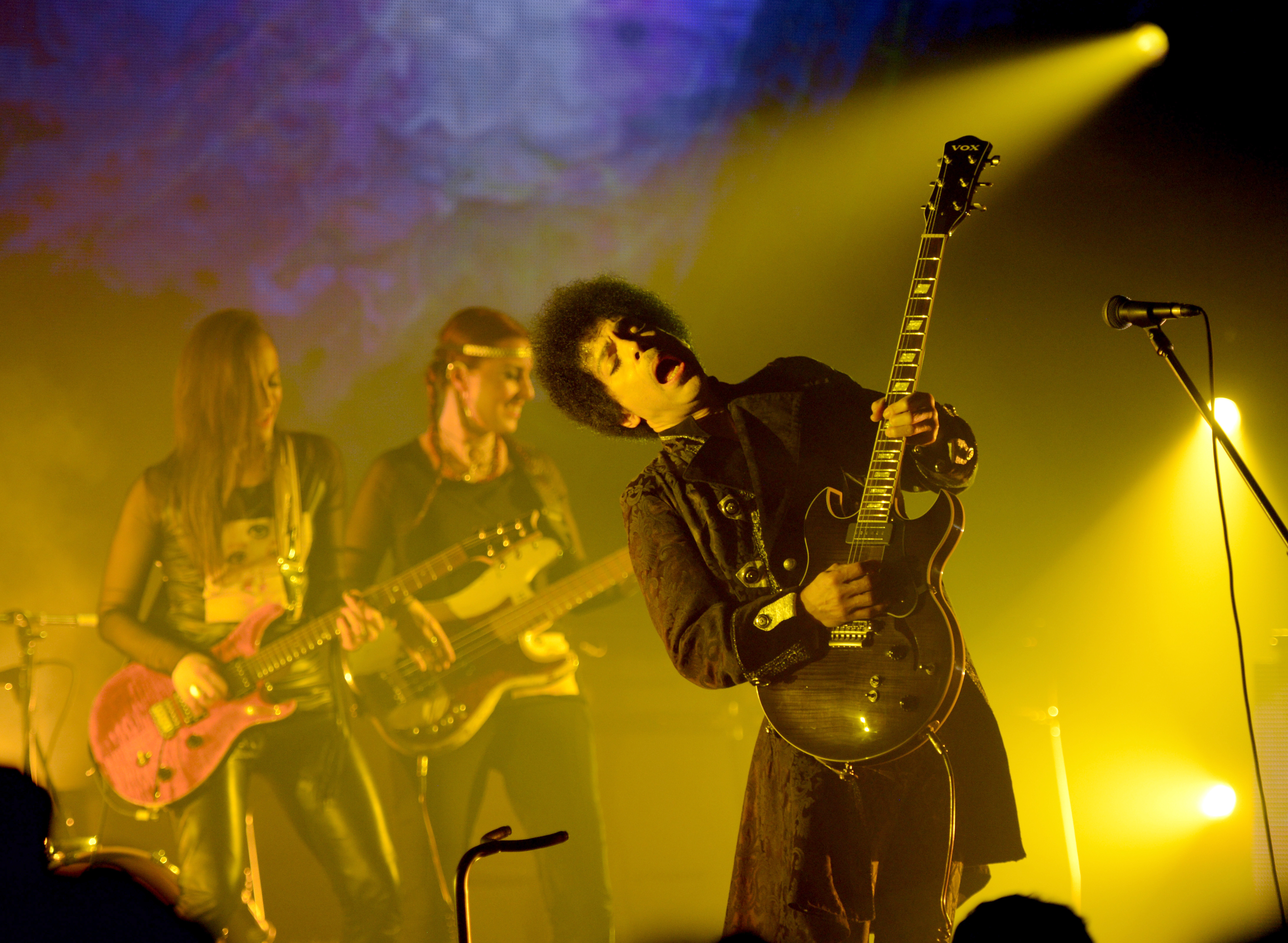It’s a popular adage that you should never decide to become a musician for the money. This is absolutely sane advice, as the vast majority of musicians don’t make enough money to live on comfortably, and there is no retirement plan. The people who give this advice usually follow it by saying “You should only play music if you LOVE it.”
This is also good advice, but what the hell does it mean? Everybody loves music. Do they mean that you should only play music if you love it like a psychopath and have no other interests? I mean, what good is music? It toys with emotions in a manner that, if a friend acted the same way, you would hate their guts. And far from bringing people together, most music is listened to now in solitude on headphones at the gym, or wherever.
So why is it still so powerful? What does it do?
There are plenty of things about the universe which we know to be true. Energy equals mass times the speed of light squared. The speed of light in a vacuum is 186,000 miles per second. The quadratic formula is X equals negative B plus or minus the square root of B squared minus four times A times C, all divided by two times A. This is science, and it makes up the indisputable body of known fact that enables us to build computer networks, suspension bridges, predator drones, and mechanical bulls.
But outside this illuminated circle of understanding are vast dark places where other truths about the universe still live in shadow. What is gravity, exactly? Is there really such a thing as dark matter or dark energy, and if so, does it speak in a low, menacing voice? Do trees communicate telepathically with one another? How do we account for spooky action at a distance? Physicists and mathematicians working at the forefront of human discovery are actually leaning into these shadows and trying to expand the circle of light. Imagine how their hearts must soar when they develop a theory and see it proved, thrilled to be perhaps the first sentient creature in all creation to divine an aspect of the mechanics of the universe.
Musicians can feel the same exact thing. Some people might scoff at the comparison between some drunk kid wearing white Ray-Bans and singing about how “love” is like “a flower” and a super-genius physicist peering into the darkness at the beginning of time, but both occupations are capable, in their greatest moments, of getting a brief glimpse over God’s shoulder. When John Lennon wrote “Imagine,” he was standing at the center of 10,000 years of science, religion, music, and myth. That song is his Theory of Relativity, describing the universe of emotion and belief as surely as Einstein did time and space. Mathematicians roll their eyes, protesting that the touchy-feely realm of emotion cannot be compared to the certainty of math, but emotion cannot be inconsistent with math. Emotion is just another aspect of the universe about which some small portion of our understanding is illuminated while the vast majority waits in shadow.
Both music and science are keys and codes which describe and unlock connections, patterns, and truths that were formerly felt but never drawn. In the right hands, both science and song allow a recipient to experience personally the revelation, the excitement of the moment of discovery, in their own minds. Just as scientists build on the discoveries of those who’ve come before, so too do songwriters. There’s no chord change or genius lyric on Nirvana’s Nevermind that hadn’t been discovered and used hundreds of times before. But Nirvana combined this ribonucleic acid of rock to create music that reverberated with millions across languages and cultures instantaneously. It may still be difficult for us to determine exactly what universal truths are contained in “Smells Like Teen Spirit,” but the results of the experiment are unequivocal.
It’s impossible to consider this prospect without traipsing over into what sounds like hippie balderdash, but the principles of fractal geometry and of melody and rhythm converge somewhere out on the horizon, somewhere much closer to the Grand Unified Theory than we’re able to connect at present. After all, music is math at its heart. But music transcends basic math just as string theory does. How can you mathematically account for Aretha Franklin’s voice? How can you plot on a graph the effect of her voice on various listeners, the spooky action at a distance of shared emotional connection that music is uniquely capable of delivering? It’s no mistake to consider music one of the sciences. Both concepts have enabled us to develop new technologies, and expand the human reach outward in new and unforeseen directions.
Whatever your creed, the idea of looking over God’s shoulder for a moment and glimpsing some small aspect of the universal clockwork is irresistible. Theoretical physics attempts to describe multiple universes and scales of large and small that we may never fully comprehend. Likewise, every day musicians deliver new information about the very real, tangible, formative realm of thinking and feeling. Our appreciation of music is the closest to practical philosophy most of us will experience.
John Roderick is the singer and songwriter for Seattle’s The Long Winters.








